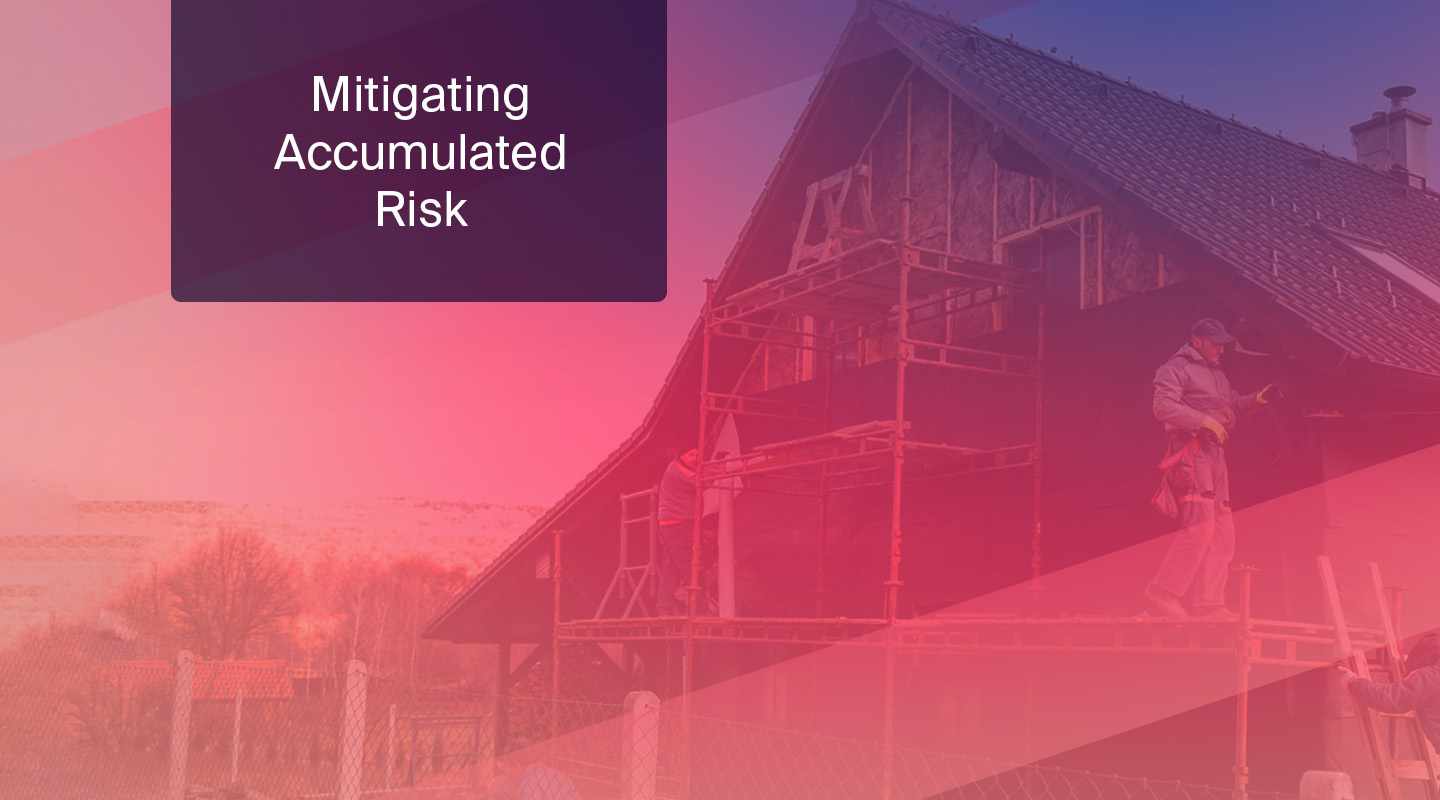Mitigating Accumulated Risk in Homeowners Insurance
How should carriers address risk accumulation? These are the options (and tradeoffs) to consider for your risk mitigation strategy.


Many carriers are focusing on digitization and operational efficiencies to decrease expenses and improve the overall customer experience. Straight-through processing, or light-touch underwriting can, however, come at a cost. While an obvious cost is missing critical information at the point of quote, another cost arises in failing to recognize changes in exposure during the renewal period.
Strategic trade-offs when optimizing profitability
Managing the performance of a renewal portfolio is a huge task for any homeowners carrier. Strategic trade-offs are often made in three areas while optimizing profitability:
- Maximizing retention and the customer experience
- Minimizing operational expense and
- Minimizing future losses
Carriers often focus most of their energy on the first two, which can lead to an accumulation of risk that they won’t catch. Managing this risk is crucial, as it's important to ensure that policies have adequate coverage and meet performance targets in the event of a loss. However, managing and monitoring risk accumulation can be a costly and time-consuming task using traditional tools.
The main driver of risk accumulation
Risk accumulation typically occurs when policies haven't been reviewed in years. The status-quo renewal inspection practices that are based on simple heuristics often leave policies unchecked since their initial underwriting. Over time, the risk levels of these policies can change materially, leaving the carrier with an accumulation of risk that they may not be aware of.
The main driver of risk accumulation is a change in the condition of the insured property since the policy was first underwritten. Examples of condition-impacting factors include vegetation overgrowth, accumulation of yard debris, and deterioration of the roof. This accumulation of risk can have serious consequences for carriers, as it can lead to increased loss ratios and financial strain.

Above: Pools, secondary structures, and trampolines are just a few examples of changes to a property that can drastically increase risk exposure.
Another reason for risk accumulation
Another reason for risk accumulation is changes in the area in which the insured property is located. New development in the area can increase the risk of loss-driving events, such as attritional fires or burglaries. Additionally, areas that were once considered low-risk may become higher-risk over time due to changes in climate or other factors.
So, what can carriers do to address risk accumulation?
There are several options available:
1. Rapid review of the book
One option is to conduct a rapid review of your entire book of policies to identify any policies that may be at an increased risk before they turn into a problem. In the past, this would be a tremendously time and resource intensive process. However, a new generation of AI tools is making the process quick, highly cost-efficient, and without the need for an IT implementation. In our work with national carriers on rapid reviews, we’ve seen that loss ratios on policies with typical high-risk flags (e.g., damaged roofs, yard debris) are approximately 2x higher than average. This case study shows how a top-10 insurer used rapid review for their book.
2. Improving high-risk property flagging at renewal
Another option is to improve the processes and systems used for flagging high-risk properties. Instead of choosing policies to inspect based on simple heuristic sampling methods from each batch of renewals, AI-powered property risk tools can help focus resources on high-risk policies. Improved risk flagging can help you mobilize inspection resources more effectively and materially reduce operational expenses while still improving loss avoidance.
3. Improving risk selection during initial underwriting
Finally, carriers can also focus on improving the process when underwriting a policy for the first time. The best way to do this is by improving clarity and having completeness of information for the specific property being insured. By investing in new technology, underwriters are able to operate with increased efficiency and accuracy, both of which drive ideal product fit and rate commensurate with risk. Getting this right upfront leads to less accumulation of risk, and appropriate premium capture over the life of the policy.
Conclusion
Ultimately, the best approach for any specific carrier will depend on individual business goals and resources. By carefully considering the options available and their potential trade-offs, carriers can develop a strategy that helps to effectively manage risk accumulation, protect financial stability, and ensure that policyholders' needs can be met in the event of a loss.
How to uncover the hidden risks in your book [FREE DOWNLOAD]
How did a top-10 insurer isolate their riskiest properties, take action to address the risk, and assure continued profitability of their book?
In this case study, you'll learn how a top carrier:
- Zeroed in on their riskiest properties
- Took action quickly and easily, without the need of IT
- Reduced their loss ratio and churn
- Improved their action rate ~60% on manually review properties
What would you find if you could perform a tailored analysis of your entire book? This study will show you how an AI-powered portfolio review uncovers hidden risks in your book.
Get the Case Study: Rapid AI-Powered Portfolio Review









